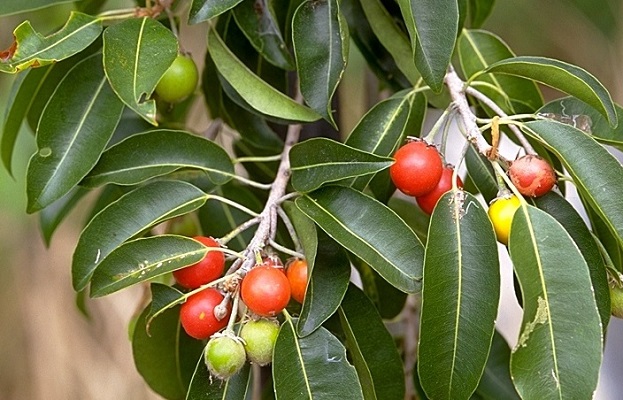On This Page
Vidarikand (Pueraria tuberosa) – Benefits, Uses, Dosage, and More
Introduction
Vidarikand, commonly known as Indian kudzu, is one of the most commonly used herbs for the alleviation of allergic conditions. Its Latin name is Pueraria tuberosa. The Name Vidari indicates that its tubers become very big inside the soil. Vidari is also known as Vrishyakanda since it is used as a potent aphrodisiac. It is an antioxidant and hepatoprotective herb which often used as an antiallergic medicine.
Dr. Gupta’s IAFA® has been studying on readily available herbs for the purpose of alleviating allergic conditions. Our experts studied on Vidari and proven the plant’s therapeutic activities like Antioxidant, Protective, Antistress, Anxiolytic, Antiallergic, Nephroprotective, Hepatoprotective, Lactogogue actions, etc. Vidari can be used as an aphrodisiac and in diseases like dysuria, erysipelas, etc. Studies have proven the protective effect of tuberous root extract of Vidari on chronic footshock stress. The root extract of this plant also has nephroprotective effects and can be used in nephrotoxicity. Tuberosin isolated from Vidari has anti-inflammatory and antioxidant effects. Methanolic root extract is hepatoprotective in action. Nowadays Vidari is also used for treating allergic conditions.
Action of Vidarikand (Pueraria tuberosa) in Allergies
IAFA® experts have successfully proven the antiallergic property of the plant Vidari. The plant contains phytoconstituents like starch, sugar, resin, puerarin, diadzein, stigmasterol, puerarone, tuberostan, puerarostan, beta sitosterol, coumestan, etc. These phytoconstituents aids the antiallergic, antioxidant and anti-inflammatory property of Vidari. Thus, it can be effectively used to alleviate skin allergic conditions.
Vernacular Names
| Sanskrit Name | Vidari, Vrisyakanda, Palasiki, Bhukushmandi, Vidarikand, Bilaikand |
| Hindi Name | Bidarikand |
| English Name | Indian Kudju, Indian kudzu, Nepalese kudzu |
| Malayalam Name | Mutukku |
| Kannada Name | Gumadigida |
| Marathi Name | Dari, Ghorrela |
Botanical Name
Pueraria tuberosa
Family
Papilionaceae
Morphology of Vidarikand (Pueraria tuberosa)
- Large twiner with tuberous root
- Stems are shrubby
- Leaves are compound, trifoliate
- Inflorescence is raceme
- Flowers are bluish
- Fruits are pods
Ayurveda Reference of Vidarikand (Pueraria tuberosa)

Geographical Distribution of Vidarikand (Pueraria tuberosa)
Vidarikand is seen in the Himalayan region, West Bengal, Assam, Punjab, and Konkan region.
Phytoconstituents of Vidarikand (Pueraria tuberosa)
The plant contains phytoconstituents like starch, sugar, resin, puerarin, diadzein, stigmasterol, puerarone, tuberostan, puerarostan, beta sitosterol, coumestan, etc.
Parts Used of Vidarikand (Pueraria tuberosa)
- Tuber
Dosage of Vidarikand (Pueraria tuberosa)
- Powder (Churna) – 3-10 g
Medicinal Properties of Vidarikand (Pueraria tuberosa)
- Daha hara – Relieves burning sensation
- Sulahara – Relieves pain
- Sophahara – Relieves swelling
- Stanya vardhaka – Promote breast milk production
- Rasayana – Rejuvenative
- Vajikarana – Aphrodisiac
- Balya – Promotes strength
- Swarya – Clarifies voice
- Mutrala – Useful as diuretic

Have A Health Issue?
Consult Online
- Dr. Sahil Gupta (B.A.M.S., M.H.A.)
Ayurvedic Allergy Specialist
CEO & Founder of IAFA®
Home Remedies of Vidarikand (Pueraria tuberosa)
Ayurveda is a widely used system of medicine in India since ancient times itself. It used many herbs that are seen around to treat diseases. Vidari is a commonly used herb in Ayurveda. As it is easily available and of its high medicinal value it is used in treating many diseases like:-
- As an Aphrodisiac (Vajikarana) – The powder of Vidari tuber is triturated with the juice of Vidari and taken with honey and ghee.
- In Dysuria (Mutrakrchra) – Vidarikand is cooked with ghee and milk and is taken to cure dysuria.
- In Erysipelas (Visarpa) – Powder of Vidari and Asparagus racemosa is mixed with ghee and applied over the skin.
- Promote breast milk production (Stanya vardhaka) – Powder of Vidari is mixed with ghee and milk and taken.
- In Hoarseness of voice (Swarabheda) – The tuber of Vidari is powdered and taken with honey.
- In Fever (Jwara) – Vidari is made into a decoction and taken to cure fever.
- In Pain (Sula) – Powdered Vidari is made into a paste and applied.
- In Burning sensation (Daha) – Vidari is powdered and taken with honey.
Ayurveda is an Indian system of medicine that is popular since ancient times. It used plants and various plant derivatives to cure diseases. Dr. Gupta’s IAFA® has been conducting research studies to find out different phytoconstituents of herbs and their action in the body. The experienced scholars of IAFA® are using this knowledge to prepare medicines and provide treatment facilities safely and effectively. IAFA® is the provider of safe and effective treatment for a wide range of diseases, mainly allergic diseases all based on Ayurveda.
Reach IAFA® for safe herbal remedies for all your ailments!!!
Was this Page Helpful?
Read More Articles

Kasini (Cichorium intybus)
Know about the uses, benefits, and medicinal properties of Chicory, Kasini (Cichorium…









